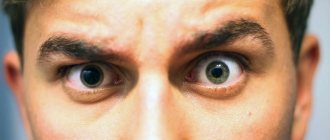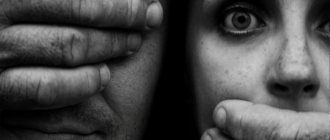What it is
Sleeping beauty syndrome is also called Kleine-Lewin syndrome, named after those who discovered it. This is a condition in which a person spends most of his time sleeping. Sleep lasts from several days to several weeks. Wakefulness takes a very short period, during which the patient behaves extremely inappropriately. He shows aggression, simply sweeps away all the food in his path.
In the intervals between sleep and wakefulness, a person is the same as usual. Except that sleep can overtake him at any time and in any place.
In world medical practice, 200 cases of Kleine-Levin syndrome are known. People started talking about him for the first time in 1786. Then the research was carried out by the French doctor de Beauchaine. In 1925, Willi Kleine, a German psychiatrist, took up the description of the pathology. He compiled a detailed description of the signs and clinical picture of the syndrome based on work with 9 patients.
In 1936, Max Lewin, a neurologist from the United States, identified a connection between periods of hibernation and inappropriate eating behavior. In his opinion, the “sleeping beauty” syndrome is a neurological disease that has nothing to do with psychiatry.
Causes and conditions of the syndrome
It is still not known exactly why Kleine-Levin syndrome develops. Neither MRI nor studies of cerebrospinal fluid and hormonal levels have revealed what provokes the development of pathology. But scientists have identified a number of theories in this regard.
- Genetic. If someone in your family has suffered from Kleine-Levin syndrome, the likelihood that you will have it increases dramatically. At the genetic level, changes occur in the brain associated with the part of the brain that controls sleep and hunger. As proof of this theory, they cite the example of Ashkenazi Jews, among whom this disease is most common.
- Disturbances in brain function after neuroinfections. In first place are meningitis and encephalitis, which are characterized by inflammation of the membrane and damage to the hypothalamus.
- The theory of hormonal imbalance. Most often, Kleine-Levin syndrome manifests itself in adolescence, when the amount of hormones reaches either its highest point or, conversely, its lowest point. Sleep in this case is considered the body’s protective reaction to these fluctuations.
- Theory of death or deficiency of orexin neurons. These cells are responsible for the correct alternation of periods of wakefulness and sleep. They also regulate nutrition and energy. If they are lacking, muscle tone decreases, weakness and drowsiness appear.
Recent research has revealed another theory - hypothalamic-pituitary dysfunction. According to her, the “sleeping beauty” syndrome develops as a result of metabolic disorders in the hypothalamus.
There are also factors that provoke the development of pathology:
- disturbances in the intrauterine development of the child;
- brain injuries;
- viral infections;
- stressful situations.
The presence of malignant or benign neoplasms can be added to the same list.
Main reasons
How does Kleine-Lewin syndrome develop? The etiology of the disease remained unknown until recently. Thanks to the development of science, more precisely the advent of positron emission tomography, some of the scientists’ assumptions have been confirmed.
Among the main causes of the development of the disease, experts identify dysfunction of the reticular formation of the brain and hypothalamus. Another predisposing factor is hormonal changes in the body, which is confirmed by the detection of pathology among adolescents of both sexes. Viral diseases, traumatic brain injuries, and causeless increases in body temperature play a certain role. In many patients there is a hereditary connection. Close relatives may suffer from manifestations of such a rare syndrome.
It is impossible to say which of the listed factors plays the main role in the development of the disease. Most scientists agree that the pathogenesis of the disease is due to a certain genetic defect in the regulation of the function of the hypothalamus, which is activated under the influence of hormonal disorders during puberty.
Symptoms
The clinical picture of Kleine-Levin syndrome looks like this:
- A person sleeps at least 18-20 hours. He only wakes up to eat and go to the toilet. It is impossible to wake him up.
- Attacks can even last for several days. In medicine, there are cases where a patient slept for 6 weeks in a row.
- Such a dream can hardly be called complete. The person does not feel rested. Therefore, after a short period of wakefulness, he goes back to sleep. At the end of the attack, he feels a surge of strength and energy, and along with it, severe hunger.
- When the patient does not sleep, he eats. Moreover, everything he sees on his way, without understanding the compatibility of products. There is nothing surprising if he eats herring with honey or, for example, snacks on a cake with pickled cucumber. By the way, in this state a person eats a lot of sweets.
- While awake, the patient exhibits aggression, irritability, and excessive emotional arousal. On top of that, he experiences euphoria and hypersexuality. Hallucinations can also be added here. These symptoms of sleeping beauty syndrome can occur several hours before a person falls asleep for the first time.
- To the above symptoms are added excessive sweating, blue discoloration of the hands, feet, lips and the area of the nasolabial triangle.
- During an attack, the level of glucose in the blood changes.
- After an attack, a person becomes the same as he was before. And the attack itself seems to fall out of his memory.
Interestingly, there is no way to determine the disease between attacks. Even after examination, the person will be absolutely healthy. The only sign is weight gain.
Most often, about six months pass between attacks. The disease appears unexpectedly and disappears just as unexpectedly. The attacks become shorter, and the period of wakefulness, on the contrary, increases. And, in the end, life returns to normal.
The duration of Kleine-Levin syndrome may vary. According to medical literature, the maximum age is 18 years.
Clinical picture and patient characteristics
The main symptoms that may indicate Kleine-Lewin syndrome are:
- The duration of sleep is quite long - the time of sleep varies between 18-29 hours . The rest of the time the patient spends on meeting his own needs, such as food, and its consumption is in huge quantities and visiting the toilet.
- Such long-term sleep attacks can last for 3-4 days , sometimes stretching to several weeks - in practice, doctors describe cases when the patient slept for 6 weeks.
- Prolonged sleep does not give the patient proper rest - after waking up, the person does not experience a feeling of vigor or relaxation. After waking up, the patient wants to sleep again after a couple of hours - if he gets enough sleep, then after waking up he is bothered by a great feeling of hunger.
- It is a huge feeling of hunger, combined with prolonged sleep , that is the main symptom of Sleeping Beauty syndrome. At the same time, the patient eats everything, indiscriminately, without giving preference to one or another product or dish, combining smoked meat and sweets in one plate - having satisfied his own hunger, the person is again drawn to sleep.
- When a person suffers from the syndrome and is awake for a long time, he will be characterized by attacks of nervousness and aggression , the patient becomes irritable and excited, and the excitement can have both a positive coloring of elevated euphoria and a feeling of happiness, and a negative coloring - in this case the patient can resemble a schizophrenic.
- And such a sign as hallucinations and excessive hypersexuality manifests itself several hours before the first pathological fall asleep, as well as in the process of exacerbation of the pathology.
- The patient is also characterized by vegetative symptoms such as increased sweating and blue discoloration of the lower and upper extremities, lips and nasolabial triangle .
- With the syndrome, blood sugar levels drop , and after the attacks pass, the patient simply does not remember what happened to him at that time.
During the breaks between attacks, the patient is not diagnosed with any abnormalities - at this time he is absolutely healthy, and the only negative during the breaks is a large and uncontrollable feeling of hunger, acting as compensation for sleep time.
Diagnostics
First, the doctor determines the severity of the symptoms described above. Afterwards, instrumental diagnostics are prescribed:
- Electroencephalography. Shows the functional activity of the brain. In Kleine-Levin syndrome, the device records peaks in the temporal and temporo-parietal zones.
- Polysomnography. Explores sleep, specifically its 3rd and 4th phases. Reveals a decrease in the time it takes to fall asleep.
- PET-CT brain. During an attack, it detects disturbances in the process of blood circulation in the area of the thalamus and hypothalamus.
Based on the results of the examination, the doctor draws up a plan for further action.
Treatment
It is impossible to say definitively what treatment will be needed. This is because it is almost impossible to identify the cause of the development of Kleine-Levin syndrome. But in most cases, two types of therapy are carried out: medication and psychological.
Taking medications
Medicines are prescribed in severe cases. These are the following groups of drugs:
- Psychostimulants. Helps cope with drowsiness. The most commonly used medications contain caffeine.
- Nootropics. They normalize metabolism in brain tissue, improve memory, blood circulation and intellectual activity.
- Normotimics. Eliminate irritability, aggression, hot temper. They also normalize the time of sleep and wakefulness.
If the “sleeping beauty” syndrome has not reached critical conditions, it is better not to take medications. The disease will go away on its own.
Working with a psychotherapist
Psychotherapeutic techniques in the treatment of Kleine-Levin syndrome make periods of sleepiness shorter. In addition, this is a personal opportunity to support a person. The following techniques are commonly used:
- Psychoanalysis. The patient is instructed to express everything that worries him now or previously worried him. He needs to be as frank as possible, even tell what he hid from his family and friends. This is the only way to find the cause of the “sleeping beauty” syndrome.
- Art therapy. Involves creative activities. This could be drawing, modeling, puppet theater, etc.
- Dreams in reality. Otherwise called symboldrama. A person is given a life situation from which he needs to find a way out. Option 3: tragic, dramatic, optimistic. Depending on the choice, the psychotherapist decides whether the patient needs help or not.
You cannot try to cure Kleine-Levin syndrome on your own. Self-medication in this, as in other cases, leads to a worsening of the patient’s condition.
Kleine-Levin syndrome: causes, symptoms and treatment
Kleine-Levin syndrome is a periodic, spontaneously occurring disorder of sleep and wakefulness in the form of fairly large periods of sleep. The dream can last for several days or even weeks. A sick person wakes up for a short period of time, but at the same time does not behave adequately, absorbs all kinds of food around him.
Periods of such “hibernation” are then amnesiac for the patient. During the interictal period the person is absolutely healthy. Kleine-Levin syndrome is a very rare pathology, but its unusual symptoms attract the attention of researchers. Let us also find out what kind of pathology this is, why it occurs, how it is characterized and how it is treated.
This article is exactly about that.
- 1 General information about the disease
- 2 Reasons
- 3 Symptoms
- 4 Treatment
General information about the disease
The first mention of the syndrome dates back to 1925. German psychiatrist Willy Klein described several cases (9) of “hibernation” among his patients. In 1936, American neurologist Max Lewin described his 5 observations of a combination of wakefulness and eating disorders.
That is why the syndrome has such a double name. Synonyms for Kleine-Levin syndrome are hypersomnia and hyperphagia syndrome (bulimia), periodic hypersomnia, Sleeping Beauty syndrome (because it is assumed that the main character of the fairy tale of the same name had a real prototype in life).
Today, despite its rarity, the syndrome is identified as a separate disease among other sleep disorders.
This disease primarily affects male adolescents and sometimes males over 20 years of age.
Several cases of Kleine-Levin syndrome have been described in girls during puberty, which, according to scientists, is associated with fluctuations in progesterone levels at this age.
Causes
The exact causes and mechanisms of development of the disease are still unknown. A number of assumptions have been confirmed thanks to modern research methods (positron emission tomography).
The main culprits in the development of Kleine-Levin syndrome are considered to be dysfunctions in the reticular formation of the brain, the hypothalamus, and the limbic system. Hormonal changes in the body are considered an almost obligatory prerequisite for the occurrence of the disease.
This is confirmed by the predominant detection of the syndrome in adolescents of both sexes. In addition, a certain role of viruses, traumatic brain injuries, and increased body temperature of unknown origin in the development of symptoms is assumed.
In some cases, there is a hereditary nature, since several members of the same family suffer from such a rare disease.
It is difficult to say which of the above factors is the main one. Most scientists agree that the disease is still based on some genetic defect in the regulation of the activity of the hypothalamus and limbic system of the brain, which is realized during the hormonal surge of puberty.
Symptoms
Patients sleep most of the day, waking up only to eat or go to the toilet.
The main signs of Kleine-Levin syndrome are as follows:
- bouts of prolonged sleep for 18-20 hours, which are interrupted only to satisfy natural needs (to go to the toilet and eat). It is simply impossible to wake up the patient during this period;
- such attacks last for several days and sometimes weeks (the maximum period of “hibernation” is described as about 6 weeks);
- sleep during attacks is not entirely complete, that is, it does not give a feeling of satisfaction and rest. Therefore, after waking up for a short period of time, the patient falls asleep again. When the episode ends completely, the person feels well-rested, but hungry;
- in those moments when the patient wakes up, he is tormented by “wild” hunger. A person eats everything he sees and finds, indiscriminately, without much regard for the taste compatibility of the products (that is, he may well eat salted fish and snack on it with a cake at the same time). Although some craving for sweets can still be traced. Having satisfied the feeling of hunger, the person goes back to sleep;
- short periods of wakefulness may be accompanied by mental changes: aggressiveness, excessive irritability, emotionality, psychomotor agitation, hallucinations, euphoria, schizophrenia-like states, hypersexuality (which is manifested by masturbation). These same signs may appear several hours before the “first” fall asleep during an exacerbation of the disease;
- autonomic components of attacks: excessive sweating, cyanosis of the hands and feet, lips, nasolabial triangle;
- changes in blood glucose levels during attacks;
- amnesia of attacks. When the exacerbation ends and the person returns to normal life, he usually does not remember these several days or even weeks at all, assuming that he slept only one night;
- the absence of any deviations during the interictal period, that is, no changes can be detected. The person turns out to be completely healthy. The only thing is that, due to uncontrolled appetite during episodes of “hibernation,” an increase in body weight is possible.
On average, after the end of one episode of “hibernation,” remission is observed for about 6 months, and then the attack repeats. But this fact is not a dogma; the intervals can be different.
Kleine-Levin syndrome, having arisen unexpectedly and having existed for some time (maybe several years), gradually disappears. What does this mean? The attacks become shorter and the intervals between them increase.
In the end, the disease disappears on its own, leaving no trace (well, perhaps, in addition to the extra pounds eaten during this time, although this is not at all necessary).
The medical literature contains information about an 18-year history of the disease.
Treatment
There is no clear treatment regimen for Kleine-Levin syndrome. Firstly, the exact cause of the disease has not been established, and secondly, the disease spontaneously regresses without leaving a trace. Therefore, some scientists do not see the advisability of drug treatment.
And yet, in cases where a person “falls into hibernation” for several weeks, and even with uncontrollable gluttony and mental disorders that cause inconvenience to relatives, a number of drugs are used.
There is no reliable evidence of the effectiveness of any of them, because doctors have tried to cure too few cases of the disease with their help.
However, taking into account the fact that the drugs lead to a decrease in the duration of attacks, prolongation of remission, and smooth out symptoms during episodes of “hibernation”, their use can be considered justified. For this purpose use:
- antidepressants;
- tranquilizers;
- neuroleptics;
- lithium preparations.
All these drugs are purely symptomatic in this case. They help, perhaps, not so much the patient as his relatives to survive such a difficult period. The patient’s relatives should remember that Kleine-Levin syndrome will certainly end in spontaneous recovery, and be patient.
So, Kleine-Levin syndrome is a mysterious reality from the fairy tale about Sleeping Beauty. Only now more males become heroes in life and they do not recover from a kiss. The exact causes of the disease are still unknown.
Bouts of prolonged sleep interrupted by a monstrous appetite in combination with mental disorders constitute the main group of symptoms of this disease. There are no effective treatments.
The period of episodes with “hibernation” must simply be survived, since the disease ends with spontaneous recovery. A radical cure for Kleine-Levin syndrome is a task for the future.
"Sleeping Beauty" from England sleeps 22 hours a day:
Prognosis and prevention
The prognosis for the pathology is favorable. Over time, the symptoms of Kleine-Lewin syndrome become less pronounced and then disappear completely.
As for prevention, there are no ways to prevent an attack. Nobody knows when it will start. But there is an opportunity to at least slightly alleviate the patient’s condition:
- Allocate no more than 8-9 hours of sleep at night.
- Also sleep during the day. 35-40 minutes is enough.
- In the evening before going to bed, do not engage in activities that require physical or mental activity.
- Do not eat chocolate, fatty or heavy foods before bed. It is also not recommended to drink alcohol and energy drinks.
Following these tips will help reduce the severity of symptoms and live with the “sleeping beauty” syndrome.
Kleine-Levin syndrome: causes, symptoms, treatment methods
Kleine-Lewin syndrome, also called “sleeping beauty syndrome,” is a rare neurological disease characterized by unpredictable periods of pathological sleepiness. It is recorded relatively rarely in clinical practice. According to WHO, the prevalence of the disease is 1 case per 1,000,000 people.
The manifestation of pathology most often occurs in adolescence (from 16 to 21 years). The overwhelming majority of patients who were diagnosed with Kleine-Lewin syndrome are adolescent boys. In girls and women, the disease is detected half as often.
Episodes of the disease occur at varying frequencies, on average once every three to six months. The duration of the painful period has individual significance.
In some patients, the duration of the pathological condition is minimal (no more than three days). Other patients suffer from symptoms of sleeping beauty syndrome for quite a long time - up to six weeks.
Neurological disease is characterized by independent, unpredictable extinction of symptoms in the second period of adulthood (after 35 years).
Stories of people with Kleine-Levin syndrome
The world learned about the British Helen Waters in 2014. She was born in 1977. As a child, she was considered slow and clumsy. Therefore, the girl had no friends among her peers. She even spent her summer holidays alone. The doctors thought it was just laziness, so they didn’t conduct an examination or make a diagnosis.
In her youth, Helen did not become more active. She was constantly haunted by a feeling of fatigue. In 2009, she fell ill with the flu. After treatment, I hoped to start working, but I fell asleep for a whole 3.5 weeks. Her parents were only able to wake her up and feed her a few times. After fully waking up, everyone was convinced that Helen was sick with something.
From that moment on, tedious trips to hospitals began. Doctors, tests, examinations could not really say anything. At first they thought it was depression. But the prescribed medications did not help. And only after additional research was carried out, experts were able to understand what happened to the girl. The diagnosis, as you understand, is “sleeping beauty” syndrome.
Now Helen cannot live without medication. If she tries to at least reduce the dosage, the period of wakefulness is sharply reduced. An unpleasant consequence of constant sleep was partial memory loss. Sometimes a girl does not recognize her family and friends in a photo from a family album.









